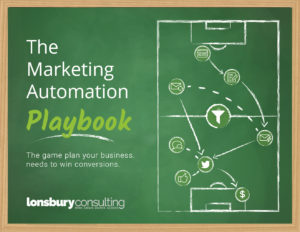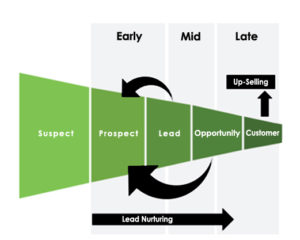Put Existing Leads Back into Your Funnel with Marketing Automation
While it seems logical that driving more traffic to your site results in more sales, it’s not as efficient as converting more of your existing traffic. Consider the math: You need 10,000 visitors with a 2.5% conversion rate to equal the same number of conversions as 6250 visitors at a 4% conversion rate –an easy concept that most would accept. But how do you increase your conversion rate?
79% of marketing leads never convert into sales.
(Source: MarketingSherpa)
The fact is prospects move through your sales funnel in their own sweet way and at their own pace. Prospects who don’t move directly and steadily through the stages of the funnel are routinely discarded as “unqualified” or “uninterested” or simply neglected.
Say you get 1000 visitors per month and close 200 of them. What are you doing with the other 800 (80%)? Do you have a process to follow up with those leads and convert them?
Marketing Automation can be used to communicate with those 800 visitors with compelling, relevant information to draw them back into your sales funnel. How much more business would it mean for you if you could close 20% of those 800 missed leads? Every month? Every year?
Chances are you don’t have the time or efficient processes in place to nurture leads for months and years into the future. This is where automated lead nurturing comes into the picture.
What is Automated Lead Nurturing?
By definition, lead nurturing refers to the various marketing activities a company undertakes in order to build relationships with prospects and eventually convert them into customers. These activities are in response to the prospects’ interests and behavior and often involve providing information and answers though a drip email campaign, which is simply a series of emails.
However, lead nurturing does not need to be limited to just email marketing. Retargeted ads, social media, and other channels can be used for lead nurturing; and, most of them can be automated!
Automating lead nurturing means to systematically track your lead engagements and accurately pinpoint each lead’s stage in the sales cycle; then deliver targeted messaging to move them through the sales funnel from awareness… to consideration… to purchase.
Automated lead nurturing saves time and produces superior results. Also important, automation often means faster response. Prospects instantly receive the right content at the right time.
The result? Leads are never forgotten and opportunities are never missed. A DemandGen study reports that nurtured leads produce, on average, 20% more sales opportunities than non-nurtured leads.
50% of qualified leads aren’t ready to buy.
(Source: Gleanster Research)
They’re interested. You have a product or service that meets their needs or solves their problem. But for whatever reason — whether its internal issues, they’re still researching options, or timing — they just aren’t ready to purchase.
Companies with sales cycles that take 6-18 months, including many B2B companies, are challenged with keeping leads engaged and moving smoothly through the sales funnel.
Monitor your customer journey
A robust marketing automation solution enables you to manage leads throughout the funnel stages. Leads can be labeled according to their stage based on automated triggers. Typically, points are assigned when the lead performs an activity such as opening an email, viewing media, or completing a form. This is known in marketing automation terms as “lead scoring.”
For example, new leads would be assigned 5 points when they provide their email address. When they visit a landing page or specific web page, another 5 points are added. If they fill out a form to request specific controlled content, another 10 points. If they spend more than 10 minutes on a web page or download media, another 5 points. And so forth. Assigning scores also enables you to monitor leads which are most active. If an active lead falls out of the funnel, you can re-engage with a targeted email or offer.
You determine what constitutes an appropriate threshold for each stage. For example, you will want to set a minimum number of points for the lead to be considered “marketing qualified.” You will also want – with input from your sales team – to decide when a lead has accumulated a sufficient number of points to turn over to sales. These thresholds should be reviewed on a regular basis with your sales team to determine if the “sales qualified leads “are ready to purchase.
Download the FREE Marketing Automation Playbook
 Ready to learn more? Discover all the ways marketing automation can help you increase your conversion rate. The 23-page playbook explains how to generate more leads and nurture them through the sales process. It provides marketing automation basics and ready to use workflows for automated campaigns, including:
Ready to learn more? Discover all the ways marketing automation can help you increase your conversion rate. The 23-page playbook explains how to generate more leads and nurture them through the sales process. It provides marketing automation basics and ready to use workflows for automated campaigns, including:
- Tracking leads and engaging them at critical points in the buyer’s journey
- Nurturing leads with hyper-personalized email and web content
- Sample nurturing campaign workflows
- Collecting real-time analytics to capture and prove end-to-end ROI

